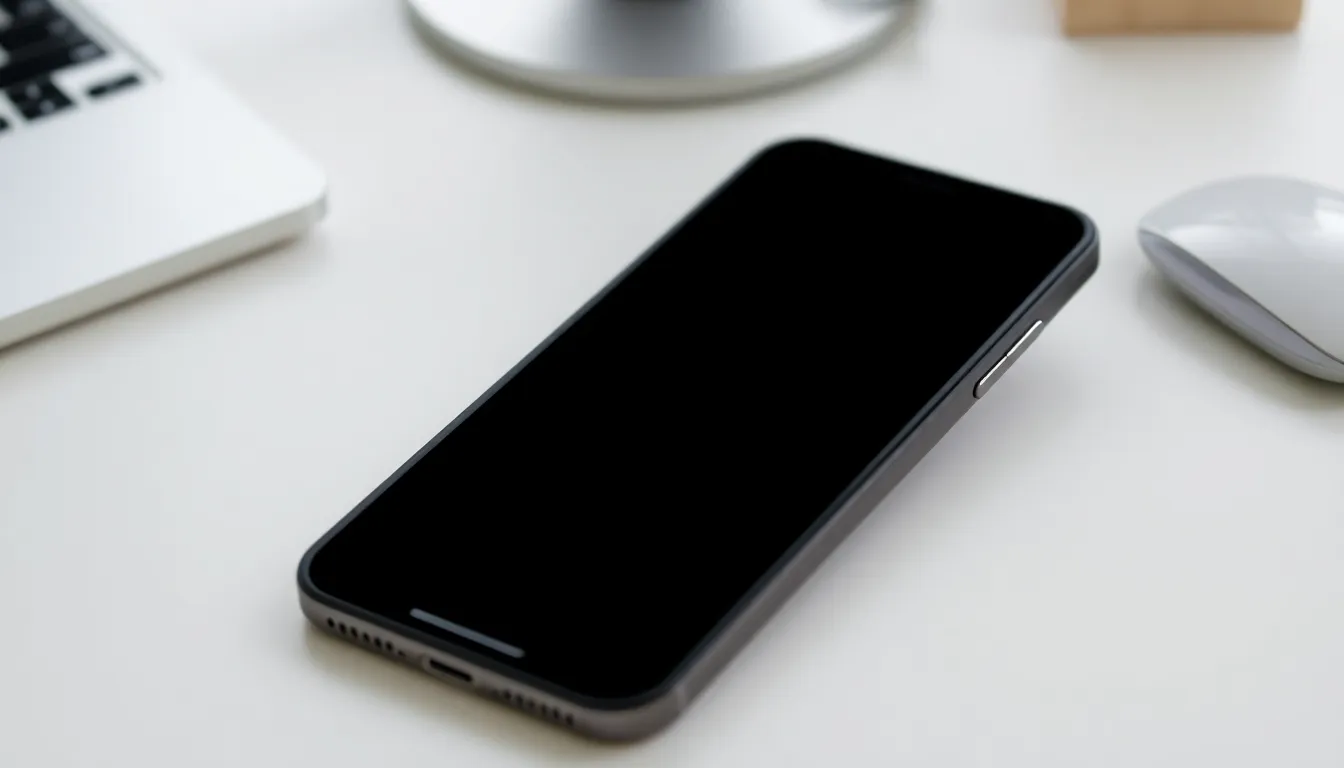Imagine this: you’re ready to conquer the world, but your iPhone decides to play hide and seek behind a black screen. Panic sets in, and you’re left wondering if your trusty device has joined the ranks of the undead. Fear not, because resetting that stubborn black screen is easier than finding a cat video online.
Table of Contents
ToggleUnderstanding the Black Screen Issue
A black screen on an iPhone often causes uncertainty for users regarding functionality. Various factors contribute to this frustrating issue.
Common Causes of Black Screen
Hardware failure can lead to a black screen. A malfunctioning display or damaged internal components disrupts normal operation. Temperature extremes often impact device performance. An iPhone may shut down unexpectedly in cold or hot environments. Software bugs frequently cause glitches. An iOS update might introduce problems or interfere with existing apps. Additionally, insufficient battery charge sometimes results in a black screen during usage. Users must check battery levels regularly to avoid this scenario.
When to Seek Professional Help
Professional assistance is essential when troubleshooting doesn’t resolve the issue. Persistent black screens typically indicate serious hardware issues. Users should contact certified technicians or authorized service providers if problems persist. If water exposure occurs, immediate evaluation by experts is crucial to prevent further damage. Lastly, if the device experiences repeated crashes or odd behavior alongside the black screen, expert help becomes necessary to diagnose complex issues.
Step-by-Step Guide to Reset a Black Screen iPhone

Resetting a black screen iPhone can restore functionality quickly. Follow the steps below to troubleshoot effectively.
Hard Reset Method
To perform a hard reset, press and hold the side button and the volume down button simultaneously. Keep holding both buttons until the Apple logo appears, which may take about 10 seconds. This method works for iPhone models with Face ID and later versions. For older models, the combination of home and side buttons applies instead. After releasing the buttons, the device should restart, allowing users to check if the black screen issue persists.
Using iTunes to Restore
Utilizing iTunes offers another solution for a black screen. First, connect the iPhone to a computer using a USB cable. Open iTunes, then force restart the device to enter recovery mode. Hold the side button and the volume down button until recovery mode activates. When prompted on iTunes, select “Restore” to erase all data and reinstall the operating system. This method may fix software-related problems causing the black screen. Ensure a recent backup exists, as restoring will erase all data on the iPhone.
Preventing Future Black Screen Problems
Users can take proactive measures to prevent black screen issues. Regular attention to maintenance can enhance device longevity.
Regular Software Updates
Keeping software up to date is crucial. Software updates fix bugs, enhance security, and improve performance. Users should enable automatic updates for convenience. Regularly checking for updates manually ensures timely installations. Apple’s update notifications serve as reminders to install the latest versions. Ignoring these updates may lead to software glitches that could cause a black screen. Monitoring the settings frequently for any available updates can minimize the risk.
Safe Charging Practices
Practicing safe charging habits helps maintain an iPhone’s health. Always use authorized charging accessories to prevent damage. Avoid charging when the device is exposed to extreme temperatures. It is best to unplug the charger once the battery reaches a full charge. Overcharging can lead to overheating, potentially causing malfunctions. Users should also refrain from using the phone while it charges to prevent further strain on the battery. Regularly inspecting charging cables for wear or damage is advisable to avoid unexpected issues.
Additional Troubleshooting Tips
Addressing a black screen on an iPhone may require additional steps beyond a simple reset. These methods can help pinpoint the issue or further resolve the problem.
Checking for Hardware Issues
Examine the device for visible signs of damage. Cracks in the screen or dents can indicate hardware failure. Inspect the charging port for debris or lint that might hinder connectivity. Using another charger can help identify if a faulty charger causes the issue. A professional evaluation can be necessary if all these checks reveal nothing. Technicians can uncover deeper hardware problems that might lead to a persistent black screen.
Using Recovery Mode
Utilizing recovery mode can restore an unresponsive iPhone. Start by connecting the device to a computer with iTunes installed. For iPhone models with Face ID, press the side button and volume up button, followed by the volume down button, then hold the side button until recovery mode appears. For older models, the home button and the side button are held simultaneously. Selecting “Restore” in iTunes initiates the process, reinstalling the operating system. Always ensure recent backups are available, as this method erases all data on the iPhone.
Dealing with a black screen on an iPhone can be frustrating but it’s often manageable with the right approach. By following the outlined steps for resetting the device and taking preventive measures, users can minimize the chances of encountering this issue in the future. Regular software updates and proper charging practices play a crucial role in maintaining device health.
If problems persist despite these efforts, seeking professional assistance is advisable to ensure the device receives the necessary care. With a proactive mindset and the right knowledge, users can keep their iPhones functioning smoothly and avoid the stress of unexpected black screens.






